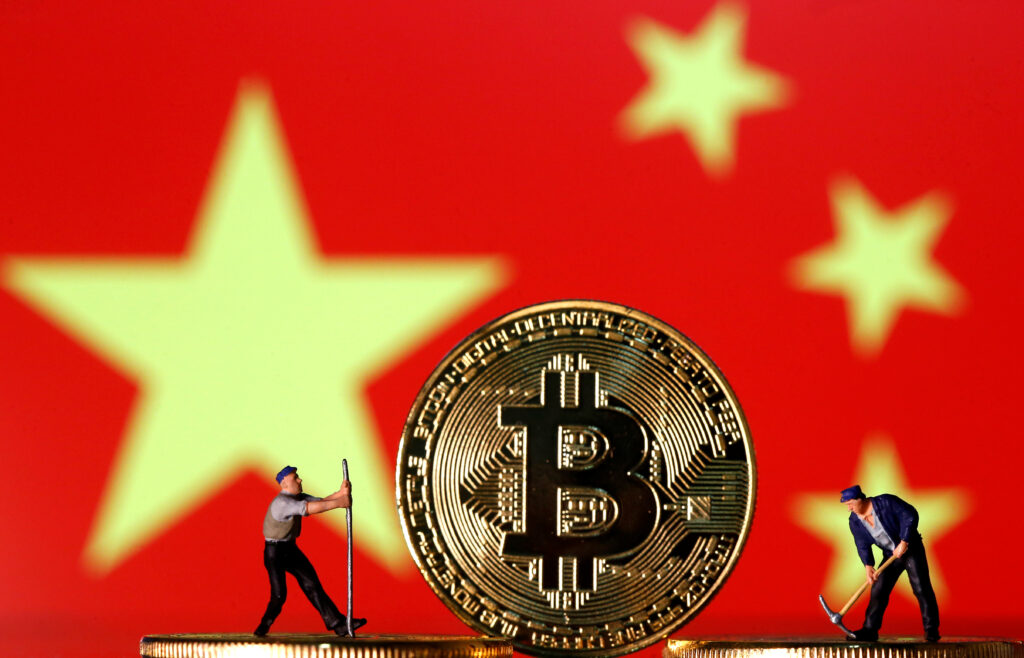On May 20, 2021, China dropped a bombshell on the cryptocurrency world when its State Council, the nation’s top administrative authority, announced a sweeping directive to crack down on Bitcoin mining and trading activities. This move, articulated during a Financial Stability and Development Committee meeting chaired by Vice Premier Liu He, signaled the beginning of an intensified campaign against decentralized digital currencies that would culminate later that year. On this day, the government declared its intent to “resolutely prevent the transmission of individual risks to the wider society” by targeting the energy-intensive mining process and speculative trading of Bitcoin, thrusting the global crypto market into turmoil and setting the stage for one of the most significant regulatory shifts in blockchain history.
The announcement came late in the day Beijing time, following a high-level meeting focused on financial stability amid a booming crypto market and a faltering domestic economy. Bitcoin was trading at around $40,000, still riding the wave of a record high above $64,000 in April, when the news broke via a State Council statement. The committee, chaired by Liu He—President Xi Jinping’s top economic advisor—didn’t mince words: Bitcoin mining and trading were singled out as threats to China’s economic order, with the government vowing to “crack down” on both. No specific timeline or enforcement details were provided on May 20, but the message was clear: the world’s largest hub for Bitcoin mining, responsible for over 65% of global hash rate as recently as 2019, was about to face an existential reckoning.
The crypto community felt the shockwaves immediately. On May 20, Bitcoin’s price began to slide, dropping nearly 10% within hours to hover around $36,000 as panic selling gripped exchanges. Chinese social media platforms like Weibo lit up with reactions—some users lamented the end of an era, with one posting, “The party’s over for miners,” while others speculated about relocating rigs overseas. Mining pools like Huobi Pool and BTC.TOP, major players in China’s crypto ecosystem, scrambled to assess the fallout. By nightfall, Huobi issued a statement hinting at scaling back operations, while BTC.TOP’s CEO, Jiang Zhuoer, told followers on Weibo that the firm might shift to North America. The hash rate—the measure of computing power securing Bitcoin—didn’t plummet instantly, but miners across Sichuan, Inner Mongolia, and Xinjiang, where cheap hydropower and coal had fueled the industry, began bracing for a forced exodus.
The timing of May 20 was no accident. China was grappling with multiple pressures: a power crunch loomed as coal prices soared, threatening industrial output during the COVID-19 recovery, and the government was pushing its carbon neutrality goals for 2060. Bitcoin mining, devouring an estimated 121 terawatt-hours annually—more than Argentina’s yearly consumption—stood out as a glaring target. Earlier that spring, Inner Mongolia had already banned mining, citing energy waste, and now the State Council was elevating the fight to a national level. Simultaneously, the People’s Bank of China (PBOC) was testing its digital yuan, a state-controlled currency that stood in stark contrast to Bitcoin’s anarchy. On this day, the announcement doubled as a flex of control, a signal that Beijing wouldn’t tolerate a rival to its monetary sovereignty.
For those in the trenches, May 20, 2021, was a day of reckoning and resolve. Miners in Sichuan, where hydropower had made the region a mining mecca, gathered in WeChat groups to debate next steps—some planned to smuggle rigs to Kazakhstan, others to Texas. Traders on platforms like Binance, still accessible despite earlier restrictions, dumped holdings as Bitcoin dipped below $35,000 by midnight UTC. Crypto Twitter buzzed with defiance—“China’s loss is the world’s gain,” one user quipped—while analysts predicted a hash rate crash that could take months to recover. The State Council’s vague wording left room for hope among some, but the tone was ominous. By day’s end, the market cap of all cryptocurrencies had shed over $200 billion, a stark reminder of China’s outsized influence on the space. On May 20, the ban wasn’t yet law, but the writing was on the wall—China’s crypto dominance was unraveling, one policy at a time.
